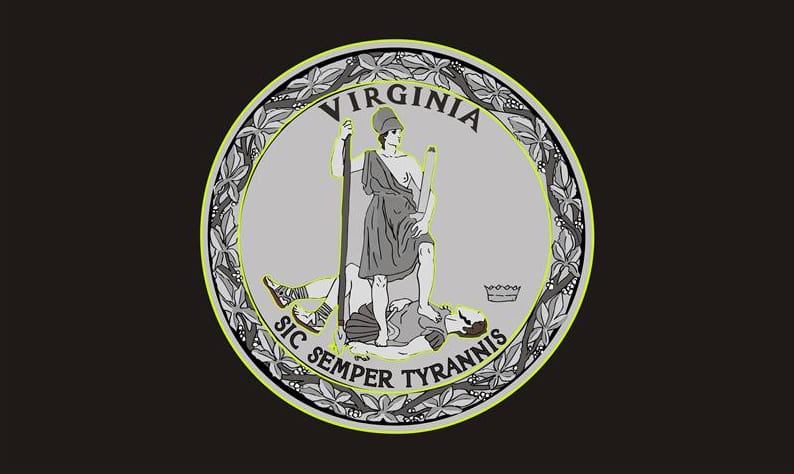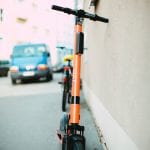

We are Attorneys and We are Riders
We Represent Virginia Cyclists
Had a Bicycle Crash in Virginia?
Contact Ben Dodge to see if the bicycle crash lawyers at Bike Accident Attorneys (BAA) can help. Unlike other lawyers who attempt to represent cyclists, our BAA lawyers actually ride and race their bicycles as well as appear and win in court. Most attorneys are just pencil pushers. We are court room litigators who are passionate about riding our bikes and we have associated local counsel in other states to allow us to help you in your state. Based on our expertise and experience we have also been admitted in other states to appear in court for our bicycle crash clients on a case by case basis. We can help you directly or ensure that you get the quality help you need in your state. Contact Ben Dodge now to see how we can protect your rights.
3 Tips on Choosing the Best Bicycle Crash Lawyer and Avoid Being Scammed
So how do you know if you have the best lawyer? There are 3 things to investigate when hiring a bicycle lawyer that can help you avoid a scammer. Some of that depends on what you think the “best” really means. To me, it is simple. The “best” lawyer will get you to the most advantageous position possible with as little cost as possible. That’s it. Nothing else to it. I have seen too many lawyers give up or miss out on incredible opportunities for their clients because of their own egos arguing the irrelevant issues or pushing too hard in a direction that only generates their own fees as opposed to the results the client would rather have.
The most advantageous position is sometimes not even what the client comes in asking for. I can’t tell you how many times I probably talked myself out of a job in an initial consult because what the client wanted actually puts them in a worse position and I wasn’t afraid to tell them so. It would have been so much easier to just tell them what they desperately wanted to hear, help them feel heard and let them vent a little. All just tell them we better hurry up and rush to court so they can be vindicated. When in reality, that won’t help them at all. So that is what many lawyers do- they try to figure out what the client wants emotionally and then sell them a legal service that matches that emotional need and of course charge them for it based on whatever they think the client is able to pay.
Obviously not all attorneys are this cold-hearted. Many of us actually care. Many of us strive to do right by the client as opposed to just trying to do right by the pocket book.
Here are some general things to watch out for when looking for an attorney, especially a bicycle accident lawyer (I don’t like the word accident, I prefer “crash” – but most of the world uses the term accident and I understand why, so I sue it too). Here are the issues to watch out for:
1) Specific Knowledge
Do they have the specific knowledge required to handle your case? Just because they graduated from law school doesn’t mean they know anything about cycling! In fact, in my opinion, most of the country doesn’t know anything about cycling. It is crazy that all sorts of professionals from police offices charged with enforcing cycling safety to insurance adjusters responsible for finding fault don’t know anything about cycling laws. This is especially true with local rules, ordinances, and even more so with knowledge of local customs and implied expectations of cycling culture and more. Now fast forward to the moment when you are looking for an attorney to help you with your crash (your bicycle accident case) and you see a billboard on the side of the freeway, or a TV commercial, or even a Google search where the words cycling lawyer were used… How much specific knowledge of bicycle cases do you think they really have? Ask them how often they ride? Ask them what their favorite route is? Ask them if they could buy any bike on the planet what would it be and why? These questions will help you quickly identify if they are even remotely plugged into the cycling community and whether or not they have specific knowledge relating to cycling. Why is this important? SIMPLE- as a cyclist you already know that most people (drivers) hate that we are out on the roads. You already have an uphill court battle of public opinion. Being right on some traffic issue isn’t enough for us. Your lawyer must know this intimately in order to successfully navigate the complex negotiations of your case with the insurance company and opposing attorneys and then ultimately in a court room where you can bet no one on the jury will be a cyclist.
Also on the topic of specific knowledge. How many cases like this issue have they handled? What were the outcomes? How confident do you feel with their answers to these questions? Specific case knowledge is helpful. Do they have experience with the opposing insurance company? With that specific police department? With your judge? And on and on.
Specific knowledge is very helpful and you can’t buy it with expensive marketing on billboards, commercials, etc. It is earned with blood, sweat, and sometimes tears through years of experience.
2) Desk or Courtroom
The next thing to investigate is whether or not the attorney you’re thinking about hiring is a desk lawyer (I fondly refer to these lawyers as pencil pushers) or a courtroom lawyer. There is a need for all sorts of lawyers. But unless you are planning on having your bicycle accident attorney draft a will or some contract for you, then you want a courtroom lawyer not a pencil pusher.
I know this is a guess, but in my experience it seems like 95% of lawyers, especially the ones who end up on billboards and commercials, are just pencil pushers. Once their cases get to tough they refer them out to a real lawyer to finish the courtroom stuff for them. Most attorneys talk a big talk in their consult with potential clients about how good they are, but when push comes to shove and they have to actually prove it to you in a courtroom with you watching, their peers (opposing lawyers on the other side of your case) and in front of a judge and jury- they simply freak out and completely drop the ball or settle for less than you should ever take just to avoid the scary courtroom.
Don’t mistakenly hire a pencil pusher. Hire a bicycle accident lawyer who thrives in the courtroom. One simple question to help catch them off guard is ask them when is the last time they were in court? What was it about? What kind of hearing was it? What was the argument they proposed and made to the judge? How did it turn out? These simple questions will help you find out if they are pencil pushers or not. Their hesitation or odd answers are a dead give away that they are likely misleading you on their courtroom abilities and experience.
We are courtroom lawyers, sometimes even going multiple times per week to court. We file lawsuits, we don’t just write a few meaningless settlement letters and sell our clients on how good the settlement is- we prove it to our clients.
3) Do You Recognize Them from a Billboard or Commercial?
Yes I said that right, do you actually recognize them from a billboard or a TV commercial? Why is this even a thing? Well, it sounds harsh but those lawyers out there spending hundreds of thousands of dollars per year (for some they spend that per month) just to recruit new clients may be struggling to get their current and past clients to even refer to them… Yep, what if your lawyer was so good and you were so impressed that you happily sent business to him/or her? See how powerful that is? I’m not saying that everyone who advertises in our line of work is a horrible lawyer. What I am saying is that it is a bit suspect since advertising is NOT cheap and it begs the question as to why they have to advertise in the first place? Is their reputation with their own clients so bad that they have to find an alternative source to finding clients? Possibly. I’m one of those guys who avoids, in fact runs away from any professional I see on a billboard. I’d much rather consult a trusted friend and get their opinion as to whom I should see or NOT see based on their experience.
Not all lawyers who advertise are bad. But like I said, I personally run away from any professional on a billboard or TV commercial. A good old fashioned referral has always proved to be much better much more often. Just sayin’.

These are just 3 of the many things to look out for when you hire a bicycle accident lawyer. Call my office up and we can chat over the phone sometime about all the other million things to look out for like attorney billable hour quotas, bonus structures, professional reputation among peers, and so much more!
We are here for you. We got your back. We protect our own like you’re a member of our tribe. Good luck. Be safe out there and keep the rubber side down.
Contact Ben Dodge and let the lawyers in the Bike Accident Attorneys National Network help you. We will assist you in your case and/or find someone for you in your state that we can trust and recommend. We have your back. We are here for you.
#MyLawyerDoesntSuck


Need a Consultation?

Virginia Bicycle Accident Statistics
Resident Population
8,412,000
Total Traffic Fatalities
760
Pedalcyclist Fatalities
10
Percentage of Total Traffic Fatalities
1.3%
Pedalcyclist Fatalities per Million Population
1.19
Virginia Bicycle Statutes
Rights and Duties
Every person riding a bicycle on a highway shall be subject to the provisions of the Code of Virginia section on motor vehicles and shall have the rights and duties applicable to the driver of a vehicle unless a provision clearly indicates otherwise.
Bicyclists and other users on sidewalks, shared use paths, and crosswalks have all the rights and duties of a pedestrian under the same circumstance.
Bicyclists and other users of shared use paths crossing highways at clearly marked crosswalks must come to a complete stop at stop signs prior to entering such crosswalk.
On shared use paths crossing highways in marked crosswalks without stop signs or other traffic control signals, bicyclists and pedestrians are not required to come to a full stop, but must not enter the road in disregard of approaching traffic.
Reference: §§ 46.2-800, 46.2-904, 46.2-924
Definitions
- A bicycle is defined as a device propelled solely by human power, upon which a person may ride either on or astride a regular seat attached thereto, having two or more wheels in tandem, including children’s bicycles, except a toy vehicle intended for use by young children. A bicycle is a vehicle when operated on the highway.
- A bike lane is defined as that portion of a roadway designated by signs and/or pavement markings for the preferential use of bicycles, electric power-assisted bicycles, and mopeds.
- A shared use path is defined as a bikeway that is physically separated from motorized vehicular traffic by an open space or barrier and is located either within the highway right-of-way or within a separate right-of way. Shared use paths may also be used by pedestrians, skaters, users of wheel chair conveyances, joggers, and other nonmotorized users.
- A sidewalk is defined as the portion of a street between the curb lines, or the lateral lines of a roadway, and the adjacent property lines, intended for use by pedestrians.
- A highway is defined as the entire width between the boundary lines of every place open to public use for purposes of vehicular travel.
- A roadway is defined as the portion of the highway improved, designed, or ordinarily used for vehicular travel, exclusive of the shoulder.
- A vehicle is defined as every device used for the transportation of people or property on a highway.
- A crosswalk is defined as any portion of a roadway at an intersection or elsewhere distinctly indicated for pedestrian crossing by lines or other markings on the surface.
- A traffic lane is defined as the portion of a roadway designed or designated to accommodate the forward movement of a single line of vehicles.
- A traffic control device is a sign, signal, marking, or other device used to regulate, warn, or guide traffic placed on, over, or adjacent to a street, highway, private road open to public travel, or shared use path.
- A shoulder is the part of a highway between the portion regularly traveld by vehicular traffic and the lateral curbline or ditch.
Reference: § 46.2-100
Traffic Controls
Bicyclists must obey all traffic signs, signals, lights, and markings.
Under certain circumstances bicyclists, motorcycles, and mopeds may proceed through a solid red light at an intersection. A driver or rider may proceed through the intersection on a steady red light only if the driver or rider complies with all five provisions listed below:
- Comes to a full and complete stop at the intersection for two complete cycles of the traffic light or for two minutes, whichever is shorter
- Exercises due care as provided by law
- Otherwise treats the traffic control device as a stop sign
- Determines that it is safe to proceed
- Yields the right of way to the driver of any vehicle approaching on such other highway from either direction
Reference: §§ 46.2-830, 46.2-833
Where to Ride
- Bicyclists must ride with the flow of traffic on the right side of the highway.
- Bicyclists operating a bicycle on a roadway at less than the normal speed of traffic at the time and place under conditions then existing shall ride as close as safely practicable to the right curb or edge of roadway.
- Exceptions to this are when bicyclists are overtaking and passing another vehicle proceeding in the same direction, preparing for a left turn, avoiding unsafe conditions, avoiding riding in a lane that turns or diverges to the right, riding on a one way street where bicyclists may ride as near the left-hand curb or edge of roadway, or when the lane width is too narrow to share with a motor vehicle.
- Additionally, bicycles are not excluded from riding on the highway shoulder.
- Bicyclists must not ride between two lanes of traffic moving in the same direction unless one lane is a separate or mandatory turn lane.
- Bicyclists cannot ride more than two abreast on highways. When riding two abreast, bicyclists cannot impede the movement of traffic and need to move into a single file when being overtaken from the rear. On a laned roadway, bicyclists shall ride in a single lane.
- Bicyclists are not permitted to ride on interstate and certain controlled access highways, unless the operation is limited to bicycle or pedestrian facilities that are barrier-separated from the roadway and automobile traffic. The restricted sections of the highways are marked with conspicuous signs.
- Bicycles may be ridden on sidewalks unless prohibited by local ordinance or traffic control devices. While on sidewalks and shared use paths, bicyclists must always yield the right of way to pedestrians and give an audible signal before passing a pedestrian.
- Bicyclists pulling onto a sidewalk or highway from a driveway must yield the right of way to pedestrians or vehicles already on the sidewalk or highway.
Reference: §§ 46.2-802, 46.2-808, 46.2-826, 46.2-903, 46.2-904, 46.2-905, 46.2-907
Changing Directions
Bicyclists must signal their intentions to stop or turn. The proper signals are made with the left arm as follows:

A right turn may be signaled with the right arm. The signals do not have to be given continuously if both hands are needed to control the bicycle.
Bicyclists may make left turns as either motorists or pedestrians do. To make a pedestrian left turn, the bicyclist should continue straight across the intersecting road, obey the traffic signals, turn left at the corner, and proceed as usual.
Bicyclists have the option of either riding or dismounting and walking in the crosswalks of the two intersecting roads. If traffic control devices specify the method of crossings, these directions must be followed.
Refer to the examples shown here:

Reference: §§ 46.2-846, 46.2-847, 46.2-848, 46.2-849
Passing
Bicyclists may overtake and pass another vehicle only when safe to do so. Bicyclists may pass another vehicle on the right or left, and they may stay in the same lane, change lanes, or ride off the road if necessary for safe passing.
Note that passing motor vehicles on the right side may be extremely dangerous if the motorist does not see the bicyclist and attempts a right turn.
A person riding a bicycle, electric personal assistive mobility device, electric power-assisted bicycle, motorized skateboard or scooter, or moped shall not travel between two lanes of traffic moving in the same direction, except where one lane is a separate turn lane or a mandatory turn lane.
Motorists must approach and pass a bicyclist at a reasonable speed at least three feet to the left of the bicyclist and shall not again proceed back to the right side of the highway until safely clear of such overtaken bicycle.
Reference: §§ 46.2-839, 46.2-907
Opening and Closing Motor Vehicle Doors
Effective July 1, 2016, no motor vehicle operator shall open the door of a parked motor vehicle on the side adjacent to moving vehicular traffic unless it is reasonably safe to do so.
Reference: § 46.2-818.1
Safety Considerations
- Bicyclists must not carry articles which prevent them from keeping at least one hand on the handlebars.
- Bicyclists must not carry more people than the bicycle is designed to accommodate, except for adult bicyclists carrying a child, under six years of age, securely attached to the bicycle in a seat or trailer designed to carry children.
- Bicyclists must not attach themselves or their bicycles to any other vehicle on the roadway.
- Bicyclists are not permitted to wear earphones in both ears while riding a bicycle.
Reference: §§ 46.2-906, 46.2-932, 46.2-1078
Helmet use
Several jurisdictions in Virginia require that every person fourteen years of age or younger shall wear a protective helmet whenever riding or being carried on a bicycle on any highway, sidewalk, or public bicycle path.
Reference: §§ 46.2-906.1
Equipment
Every bicycle ridden between sunset and sunrise must have at least one white headlamp with the light being visible at least 500 feet to the front. The bicycle must have a red reflector on the rear visible at least 600 feet to the rear. On roads posted with speed limit of 35 mph or greater, the bicyclist must additionally be equipped with at least one red taillight visible from 500 feet to the rear. Taillights may be steady or blinking, are allowed under all conditions, and may be attached to the cycle or rider.
Bicycles ridden on highways must have brakes which will skid the wheels on dry, level, clean pavement.
Reference: §§ 46.2-1015, 46.2-1066
Registration
Bicyclists may register the serial numbers of their bicycles with local police or sheriff’s department. Localities have the authority to license bicycles.
Reference: §§ 46.2-908, 15.2-1720
Accidents
Bicyclists must stop when they are in an accident involving death, injury, or property damage. The bicyclist’s name and address must be given to the police and to any person involved in the accident or the owner of the property. The bicyclist’s name and address must be given to the owner. If the owner can not be located, the bicyclist must leave a note in a conspicuous place at the accident site and report the accident to the police within 24 hours.
If unattended property is damaged, the bicyclist must make a reasonable effort to find the owner.
Reference: §§ 46.2-894, 46.2-895, 46.2-896
Mopeds, Electric Power-assisted Bicycles, and Electric Personal Assistive Mobility Devices
Generally the laws for the operation of mopeds, electric power-assisted bicycles, and electric assistive mobility devices are similar to the operation of bicycles.
“Moped” means every vehicle that travels on not more than three wheels in contact with the ground that has (i) a seat that is no less than 24 inches in height, measured from the middle of the seat perpendicular to the ground and (ii) gasoline, electric, or hybrid motor that displaces less than 50 cubic centimeters.
Moped operators must be at least 16 years old and must carry some form of identification that includes name, address, and date of birth.
A moped is considered a vehicle while operated on a highway. Mopeds can not be ridden on sidewalks or bike paths.
Some localities in Northern Virginia may impose restrictions on the operation of mopeds. Localities can require additional safety equipment for moped operation.
“Electric power-assisted bicycle” means a vehicle that travels on not more than three wheels in contact with the ground and is equipped with (i) pedals that allow propulsion by human power and (ii) an electric motor with an input of no more than 1,000 watts that reduces the pedal effort required of the rider.
Operators must be at least 14 years old or be under the supervision of someone at least 18 years old. An electric power-assisted bicycle shall be considered a vehicle when operated on a highway.
“Motorcycle” means every motor vehicle designed to travel on not more than three wheels in contact with the ground and is capable of traveling at speeds in excess of 35 miles per hour.
The term “motorcycle” does not include any “electric personal assistive mobility device,” “electric power-assisted bicycle,” “farm tractor,” “golf cart,” “moped,” “motorized skateboard or scooter,” “utility vehicle” or “wheelchair or wheelchair conveyance” as defined in this section.
“Motor-driven cycle” means every motorcycle that has a gasoline engine that (i) displaces less than 150 cubic centimeters; (ii) has a seat less than 24 inches in height, measured from the middle of the seat perpendicular to the ground; and (iii) has no manufacturer-issued vehicle identification number.
“Motorized skateboard or scooter” means every vehicle, regardless of the number of its wheels in contact with the ground, that (i) has no seat, but is designed to be stood upon by the operator, (ii) has no manufacturer-issued vehicle identification number, and (iii) is powered by an electric motor having an input of no more than 1,000 watts or a gasoline engine that displaces less than 36 cubic centimeters.
The term “motorized skateboard or scooter” includes vehicles with or without handlebars, but does not include “electric personal assistive mobility devices.”
An electric personal assistive mobility device is a self-balancing two-nontandem-wheeled device that is designed to transport only one person and is powered by an electric propulsion system that limits the device’s maximum speed to fifteen miles per hour or less.
Such devices must be equipped with a system that will enable the user to bring the device to a controlled stop.
These devices may be operated on highways with a maximum speed limit of 25 miles per hour or less if no sidewalk is provided or if use of the sidewalk is prohibited.
Operators must be at least 14 years old or under the supervision of a person who is at least 18 years old. An electric personal assistive mobility device is considered a vehicle when operated on a highway.
Reference: §§ 46.2-100, 46.2-903, 46.2-908.1, 46.2-914, 46.2-915.2, 46.2-1051






